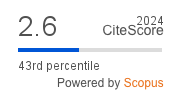Classification of Breast Cancer from Digital Mammography Using Deep Learning
DOI:
https://doi.org/10.4114/intartif.vol23iss65pp56-66Keywords:
Deep Learning, Image Processing, Breast CancerAbstract
Breast cancer is the most frequent in females. Mammography has proven to be the most effective method for the early detection of this type of cancer. Mammographic images are sometimes difficult to understand, due to the nature of the anomalies, the low contrast image and the composition of the mammary tissues, as well as various technological factors such as spatial resolution of the image or noise. Computer-aided diagnostic systems have been developed to increase the accuracy of mammographic examinations and be used by physicians as a second opinion in obtaining the final diagnosis, and thus reduce human errors. Convolutional neural networks are a current trend in computer vision tasks, due to the great performance they have achieved. The present investigation was based on this type of networks to classify into three classes, normal, benign and malignant tumour. Due to the fact that the miniMIAS database used has a low number of images, the transfer learning technique was applied to the Inception v3 pre-trained network. Two convolutional neural network architectures were implemented, obtaining in the architecture with three classes, 86.05% accuracy. On the other hand, in the architecture with two neural networks in series, an accuracy of 88.2% was reached.
Downloads
Metrics
Downloads
Published
How to Cite
Issue
Section
License
Copyright (c) 2020 Iberamia & The Authors

This work is licensed under a Creative Commons Attribution-NonCommercial 4.0 International License.
Open Access publishing.
Lic. under Creative Commons CC-BY-NC
Inteligencia Artificial (Ed. IBERAMIA)
ISSN: 1988-3064 (on line).
(C) IBERAMIA & The Authors









